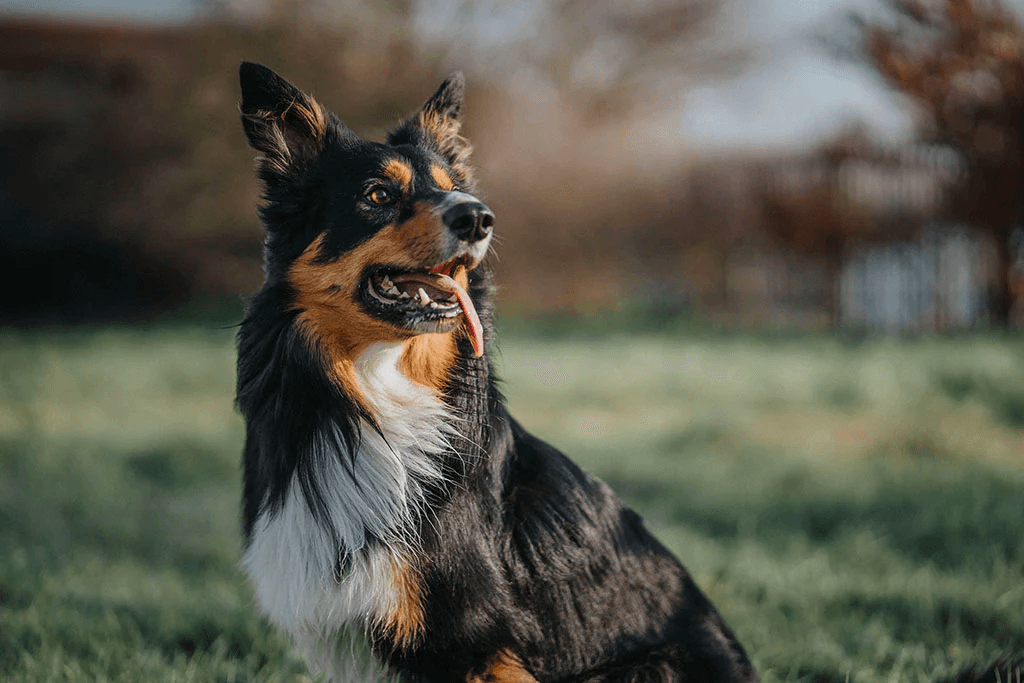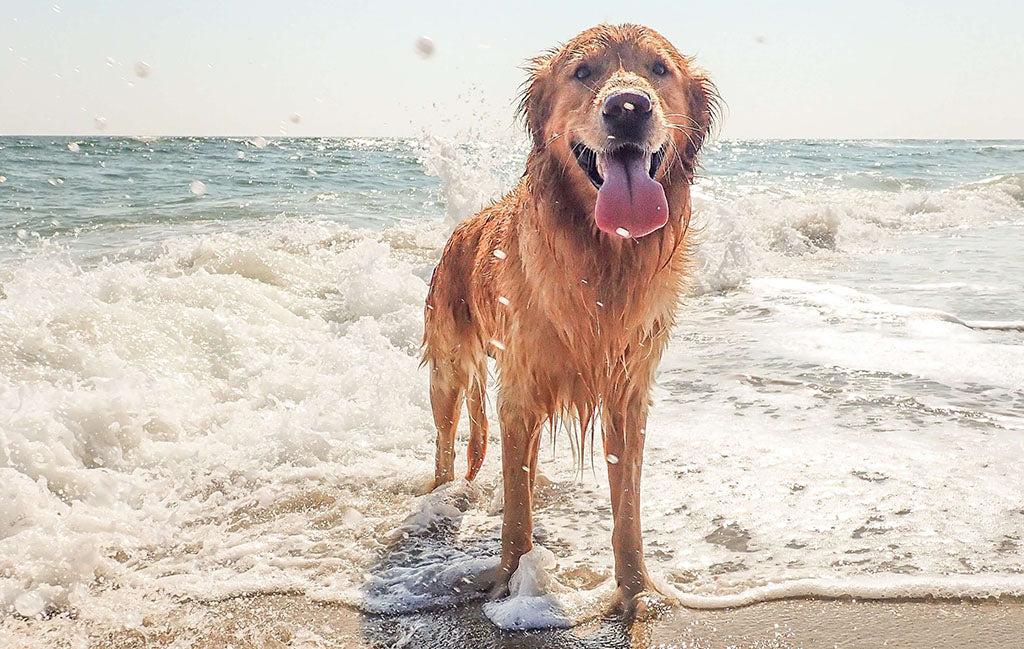Wondering how to moisturize dog skin at home, and keep your pup’s coat gleaming with health and wellness?
Dry skin on your dog can be frustrating for both you and your dog. Not only can it make your dog uncomfortable, but it can also be a sign of an underlying problem. That is why you, as a responsible pet parent, should know how to moisturize your dog’s skin as an essential part of a healthy, normal grooming routine.
In this article, we will discuss the common causes and locations of dry skin in dogs, veterinary-approved tips for moisturizing your dog’s skin, specific product suggestions, what things to avoid when attempting to moisturize your dog’s skin, and when to seek advice from your veterinarian on treatment and management of your dog’s dry skin.
Why Do Dogs Get Dry Skin?
Let’s discuss some of the more common causes of dry skin in dogs:
- Seasonal changes: Similar to humans, colder weather, drier air (especially during the winter), and changes to indoor environments can result in dry, irritated skin in dogs.
- Overbathing or harsh shampoos: Bathing your dog too often (i.e., more than every 1-2 weeks) or using harsh shampoos can irritate your dog’s skin, and potentially damage their hair follicles.
- Age: Senior dogs (those over the age of 7) are more prone to having dry, flaky skin than puppies and younger dogs. Older dogs may also have concurrent underlying health conditions that contribute to their dry skin.
- Breed: Certain breeds of dogs, such as the hairless breeds like the Chinese Crested, are more prone to skin conditions. Other breeds, such as the Siberian Husky and Alaskan Malamute, can acquire a skin condition known as zinc-responsive dermatosis.
Signs Your Dog’s Skin Needs Moisturizing
Now that we know some of the more common causes of dry skin in dogs, let’s take a look at how you can tell exactly when your dog’s skin is lacking moisture:
- Dry, flaky, or scaly patches
- Itchiness and scratching
- Dull or brittle coat
- Redness or irritation
- Licking or chewing certain areas
It is important to note that every dog is unique and may or may not show all the above. Therefore, it is strongly recommended that you consult your veterinarian to ensure that the cause of your dog’s dry skin is diagnosed and treated appropriately.
Common Areas Where Dogs Get Dry Skin
As stated above, every dog is unique in their symptoms of dry skin. It is also important to note that certain areas of your dog’s body will be more prone to developing dryness, irritation, and cracking than other areas of their body.
In this section, let’s examine a few of the areas that you, as a pet parent, should keep a closer eye on for evidence of dry, irritated skin:
- Paws: Your dog’s paws can become dry, rough, or even cracked. Behavior changes are even possible. Cracked dog paws most commonly occur because of playing on rough surfaces, or exposure of the paw pads to extreme temperatures.
- Nose: Often, a dog’s slightly dry nose is nothing to worry about. Your pup might just need a drink after a cozy nap in the sun or near a heater.
- Belly and Groin Area: These areas of your dog’s body are typically covered and protected by thinner or less fur and are, therefore, more exposed to things like seasonal allergens, friction, or cold floors that can result in dry and itchy skin.
- Ears: The outer edges of the ears can become dry, crusty, or cracked. This is especially true in dog breeds with thinner coats or lighter skin.
- Elbows and Joints: Pressure points over your dog’s joints, like their elbows and hocks (i.e., ankles), are more likely to develop dry areas. Large and giant breed dogs (think Labs and Great Danes!) are much more likely to develop these dry areas of skin, especially if they commonly lie on hard surfaces for extended periods.
5 Ways to Moisturize Your Dog’s Skin
Now that we have discussed some of the most common causes and locations of dry skin in your dog, let’s take a look at some ways that you can moisturize your dog’s skin:
- Use a Moisturizing, Dog-Safe Shampoo: Look for gentle, soap-free formulas that contain aloe, oatmeal, or chamomile. Avoid using human products, even baby shampoo, as the ingredients will be too harsh and may disrupt the skin barrier, causing your dog’s skin to become dry or irritated.
- Coconut Oil for Your Dog’s Dry Skin: Coconut oil is rich in fatty acids that moisturize and improve your dog’s skin barrier. This reduces the overall dryness and flakiness of your dog’s skin.
Coconut oil is also considered to have natural properties, so it can be applied directly to your dog’s skin and massaged into areas of skin with minor irritation or dryness. Coconut oil can also be used as a “leave-in” conditioner by rubbing a small amount in your hands and then massaging it into your dog’s skin and running your fingers through their coat to help the coat appear sleeker.
- Use a Leave-In Conditioner or Dog Skin Balm: These products are great to use after and in between baths, especially if your dog is prone to dry skin. PetLab Co.’s Paw Balm Stick, for example, moisturizes and supports dry and cracked paws that develop because of licking, chewing, and exposure to the weather and elements.
Using a leave-in conditioner or dog skin balm helps to replenish or retain moisture in your dog’s skin and coat. This supports the quality of the coat, which, in turn, relieves the discomfort of any itchiness, as a result of dry skin. However, you should NEVER use a human hair conditioner on your dog, as it will be too harsh and may cause serious damage to your dog’s skin.
- Diet: Feeding a nutritionally complete and balanced, high-quality dog food has undeniable benefits for your dog’s skin and coat health. Omega-3 fatty acids (fish oil) and Vitamin E are two of the most important nutrients that promote a healthier skin and coat in your dog. Not only do these nutrients contribute to the moisturization of your dog’s skin, but they also protect against environmental allergens that contribute to skin dryness. Vitamin E is also an important component for the production of collagen, which is necessary for good skin health. PetLab Co.’s Skin & Coat chew, for example, moisturizes dry skin, helps support occasional itching, and conditions your dog’s coat.
- Keep Your Dog Hydrated: This may seem like an overly simple or obvious method to prevent your dog from developing dry skin. Regardless, having dry skin can be a sign of dehydration. Always be sure to have plenty of clean, fresh, easily accessible water available to your dog at all times. Adding water to their dry food or adding canned food to your dog’s diet may also be helpful to maintain adequate hydration, especially in senior pets.
How to Moisturize Dog Skin After a Bath

Follow these simple steps to adequately moisturize your dog’s skin AFTER their bath:
- Gently towel-dry your dog. Avoid drying without rubbing, as this can damage your dog’s hair (e.g., broken hair shafts) and skin if it is too vigorous.
- Apply leave-in moisturizer or balm to reduce skin irritation and help with underlying allergies. For maximal effectiveness, be sure to apply the leave-in moisturizer or balm to your dog’s skin within the first few minutes of the bath while they are still damp.
- Avoid hair dryers unless on a cool setting, because most human hair dryers are designed specifically for human hair and may become too hot for your dog’s more delicate fur. This could result in skin irritation and even burns if used on your dog’s skin.
- Don’t bathe too often—once every 4-6 weeks is usually adequate for healthy dogs because they have oil glands in their skin that keep their skin soft and moist. However, dogs that have dry or irritated skin may need to be bathed more frequently (i.e., every 1-2 weeks) and with a medicated shampoo. Your veterinarian can provide the appropriate recommendations for your dog’s specific skin needs.
How to Moisturize Dog Skin in Winter
Seasonal shifts, specifically during the fall and winter, result in dry air that strips the moisture from your dog’s skin. You can do the following to help keep your dog’s skin adequately moisturized during the harsh winter.
- Run a humidifier: Low humidity and indoor heating systems result in much drier air in the winter, and therefore, more moisture is absorbed from your dog’s skin and back into the environment. This makes your dog’s skin more prone to damage and sensitivity to everyday irritants and allergens. Running a humidifier in your home during the winter adds moisture back into the air and reduces the degree of winter itching for your pup.
- Limit time in the snow: Except for “arctic” breeds, it is recommended that smaller breeds or those dogs with thinner coats be limited to no more than 30 minutes outside when it is 32 degrees F or below. Walking or play time is best done during the warmest and sunniest time of the day during winter, typically between 8 a.m. and 3 p.m. Keep in mind that puppies and older dogs, especially those with underlying medical conditions, are going to be more prone to cold-weather problems such as frostbite and hypothermia.
- Moisturize paws: After your dog has spent time outside during the winter, and you have cleaned their paws using grooming wipes or an aloe-oatmeal shampoo, be sure to apply a moisturizing balm to their paw pads. These products are thicker than a cream, so they protect the paw pads longer and lock in moisture. Look for products that contain ingredients such as shea butter, coconut oil, and beeswax. Application to other areas that are also prone to dry skin, like your dog’s nose and elbows, is also a good idea.
- Use protective outerwear: If your dog is especially prone to dry skin and cracked paw pads during the winter, you may want to consider covering your dog’s paws with waterproof booties when they are outside. These booties also provide a physical barrier against outdoor winter hazards, such as chemical irritants like ice melt or rough, sharp surfaces like ice.
When to See a Veterinarian About Your Dog’s Dry Skin
Due to the many underlying causes that can lead to your dog having dry, irritated skin, it is strongly recommended that you schedule an exam with your veterinarian as soon as you notice a change in their skin or coat. Although the majority of cases are not going to be an emergency, you should consult with your veterinarian as soon as possible if you notice any of the following clinical signs:
- Persistent dryness
- Excessive scratching
- Signs of a skin infection (e.g., redness, swelling, or a bad odor)
- Crusts or scale on the surface of the skin
- Greasy feel to the coat
- Hair loss (alopecia)
- Cracked skin or paw pads
- Underlying conditions like allergies, parasites, or hormonal imbalances (secondary to metabolic diseases) may require medical treatment.
What NOT to Use on Your Dog’s Skin
It is extremely important to use products that are safe for your dog’s skin, especially if they are prone to dry skin or other skin conditions. Using the wrong dog skin products, especially products meant for humans, could potentially make current skin problems worse or cause new skin issues.
While skin products made for humans are generally considered unsafe for dogs, even products made to be used on your canine companion can surprisingly contain harmful ingredients. In addition, dogs are highly likely to lick the area of application almost immediately after applying. So, the products that you use on their skin should be natural and also safe if consumed.
The following are some of the most common ingredients or products to avoid using on your dog’s skin:
- Avoid human lotions that contain ‘fragrances’ or essential oils that can be poisonous to dogs. For example, cinnamon, citrus, peppermint, tea tree, and wintergreen can be toxic to dogs via ingestion or skin exposure.
- Never use Vaseline or petroleum jelly without your veterinarian’s guidance. Vaseline is not considered toxic to dogs when used in small amounts. However, if your dog licks off and ingests a large amount of it, it could lead to an upset stomach, vomiting, and diarrhea.
Instead, it is recommended that you look for dog skin products that contain natural ingredients that you are familiar with. Ingredients such as coconut oil, natural vitamin E, and other plant-based materials are ideal. Not only are they considered safe, but they have also been proven to moisturize, soothe, and improve the overall appearance of your pup’s skin.
Conclusion: How To Moisturize Your Dog’s Skin at Home
Taking a proactive approach to your dog’s skincare routine is paramount if you want to avoid dry skin and keep your dog’s coat moisturized.
Implement regular coat and skincare routines, such as bathing your pooch with a dog-safe, moisturizing shampoo, applying a leave-in conditioner after their bath, feeding them a nutritionally balanced, high-quality dog food, supplementing with omega-3 fatty acids and vitamin E, keeping them adequately hydrated, and using a humidifier in the winter are just a few of things you as a pet parent can do to keep their skin healthy and comfortable. In addition, using simple, natural remedies such as coconut oil on your dog’s skin and coat can make a big difference when used safely and as recommended by your veterinarian.
Most importantly, however, is knowing when to seek help from your veterinarian for your dog’s dry skin. Persistent dryness, excessive scratching, redness, hair loss, or cracked skin or paw pads on your dog is a sign that they need to be examined as soon as possible. Your veterinarian will be able to determine any underlying causes of your dog’s dry skin and provide you with the appropriate recommendations for treatment and management that will keep your dog feeling happy and comfortable for years to come.
Sources
Dry Skin on Dogs: Signs, Symptoms, Treatments
https://www.splootvets.com/post/how-to-moisturize-dog-skin-cure-dryness
https://www.petmd.com/dog/general-health/cracked-dog-paws
https://www.hillspet.com/dog-care/healthcare/dry-dog-nose-treatments?lightboxfired=true#
https://vetnique.com/blogs/vets-corner/dog-suffering-from-dry-flakey-skin
https://www.thesprucepets.com/coconut-oil-for-dogs-4582549
https://vcahospitals.com/know-your-pet/essential-oil-and-liquid-potpourri-poisoning-in-dogs






